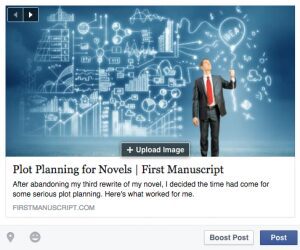Over the years, I’ve attended numerous workshops and writers’ group meetings. Often the subject of software comes up, especially when we share material for critique. After listening to other writers and experimenting with different applications, I have formed strong opinions regarding the best novel writing software.
Before exploring the options, let’s review the tasks we expect novel writing software to perform. Here are my requirements:
- Record the words I type
- Edit (make corrections and changes)
- Organize (scenes and chapters)
- Reorganize (move sections around)
- Format (eventually you will need to properly format your manuscript)
- Save in a format that can be shared
- Support tracking changes (needed to receive comments and corrections)
Using Text Editors to Write Novels
The primary task we expect our writing software to perform is to ease the process of getting the words out of your head and onto the page. For this, even the most basic text editors perform this task well. For example, if you use Windows, Notepad will work. For Apple users, TextEdit is simple and easy to use. Finally, Linux users have a plethora of choices like vi or nano. I’ve used all the above, but I don’t recommend any of these because of other considerations.
Formatting on text editors is limited or nonexistent. One of the big reasons not to use a text editor is that you will need to insert extra carriage returns to separate your paragraphs for readability. Before you can send them to a publisher, you will need to remove these.
Another concern is that most text editors won’t let you insert page breaks for new chapters and don’t support bold, underlined, or italicized characters.
But the biggest issue is size. Novels contain a large number of words, generally somewhere between 50,000 and 100,000 (War and Peace has over half a million). Their size quickly becomes a nightmare to navigate using a text editor.
So, for many reasons, text editors are out.
Using Word Processors for Novel Manuscripts
Word processors handle large documents like novels with ease. In addition, they provide navigation tools to assist in moving quickly to any point in the manuscript. So any good word processor will support the first five requirements. They all support writing, editing, organizing, and formatting.
Right or wrong, Microsoft Word’s format has become a de-facto standard. If you participate in critique groups (in person or online), the group will most likely instruct you to submit your work in MS-Word format (.docx). Plus, at some point, you will probably need the assistance of an editor. Every editor I have met insists on receiving manuscripts in MS-Word format. If you are lucky enough to work with an agent or publishing house, they will also require your manuscript in MS-Word.
When editors review your work, they will enable MS-Word’s Track Changes feature and use it to record their additions, deletions, and changes. In addition, they will also use these features to insert comments. Most fellow writers who critique your work will do the same. So to meet our needs, word processing software must also support MS-Word’s Track Changes and Comment features.
The following word processors meet these requirements:
- Microsoft Word
- LibreOffice Writer
- Apple Pages
- Google Docs
Using Creative Writing Software for Composing Novels
Writing a novel is a complicated affair. Plots need to be engineered. Settings need to be imagined and detailed. Characters need to be developed, complete with physical features, emotional scars, and backstories. And much more.
There is a plethora of software available to assist novelists. I have not used any of these, so I’m not qualified to review them. Literature and Latte cover the subject and other topics in their Links for Writers page. Reedsy provides good information on more than a dozen creative writing tools on their blog. (Of course, they rate their product best).
Scrivener, marketed by Literature and Latte, gets mentioned a lot as a tool for novel-writing, with features to assist writers in nearly every aspect of composing a long story. In a workshop I attended, one participant told the group he had been recruited to teach a class on how to use Scrivener, and he was struggling to master the software well enough to teach. Several other writers indicated they owned a copy, but none actively used it. Some had given up before figuring out how to use it, while others had stopped using it because of the complexity. Finally, one of the writers recommended watching a set of tutorial videos covering how to access different features. After listening to the discussion, I concluded that it would be better to use my time writing instead of learning to use the software.
Software I Use For Novel Writing
Over the years, I have experimented with a lot of different software. Currently, the devices I use for writing include:
- Desktop: iMac
- Laptop: Macbook Air
- Phone: Google Pixel
I realize that’s an odd combination. But, the reason for mentioning this is that it affects my software choices.
Currently, this is what works for me.
Google Docs for Writing
Currently, I write my novels using Google Docs. Why? There are several reasons:
- The tools are simple, with enough functionality to do the job, but without a ton of unneeded features that get in the way.
- There’s no software to install. I can use any browser.
- My work is saved in the cloud (Google Drive). So I can access it from my desktop, laptop or phone.
- I can export and import to MS-Word format.
- It’s free.
Could I do this using MS- Word and Office 365? Absolutely.
My point is that Google Docs gets the job done for me.
Google Slides for Plot Planning
I know what you’re thinking. Using presentation software for plot planning sounds crazy. I explain this in more detail in my article, Plot Planning for Novels.
In a nutshell, I develop my plot plan by summarizing each scene on a single slide. This technique lets me work at a high level. I can see the big picture. In addition, it’s easy to insert, delete and reorder scenes using the grid view.
Then, when I’m ready to write a scene, I copy the slide summary into my manuscript (and make the font color blue, so it stands out). That way, I can see my notes for the scene while I write. Then, when I finish writing the scene, I delete the blue notes.
Google Keep for Capturing Notes on the Fly
Google Keep is an Android App (similar to Notes on iPhone). So when I’m anywhere (working my day job, at dinner, or on the beach at a vacation resort) and I get an inspiration, I capture it before I get distracted by opening Google Keep on my phone and making a note.
Later, when I’m writing, I can display my Google Keep notes in a browser window while incorporating the notes into my manuscript.
Google Drive for Organizing Information
As I research locations, I take pictures and videos on my phone. When I research things on my computer, I’ll save screenshots from web pages. When I develop characters, I’ll write up detailed profiles for each character.
I create a separate folder on Google Drive for each novel. I can easily upload pictures and videos using the Google Drive app from my phone. I save my Plot Planning, Character Profiles, and everything else in one convenient place in Google Drive, where the information is easy to access no matter which device I’m using to write, including my phone. (Yes, I am guilty of writing using my phone while I sat on planes or in doctors’ offices.)
Summary
The whole purpose of novel writing software is to assist you in getting the story out of your head and onto your manuscript. That means it needs to be easy to use and available whenever you have a few minutes to write.
I’ve shared what works for me. Please tell me what works for you in the comments below.
This article mentions a book. More information is provided below.
(Full disclosure: I get a commission if you click the link and make a purchase.)
Comments
12 Comments
Submit a Comment
Related Posts

Taglines Make Characters Memorable
Taglines or catch phrases make it easy for readers to remember a character. When they are done right, even years later, we recall the character with clarity.

How To Make Your Posts Facebook Friendly
You compose posts that are interesting and informative. You want people to read and share them. But have taken time to make your posts Facebook friendly?

Book Review: In Leah’s Wake by Terri Giuliano Long
In her debut novel, In Leah’s Wake, Terri Giuliano Long explores the aftermath created when a teenage soccer star falls for a party-loving boy with a drug-dealing past.

Creative Ways To Capture Research Notes
When my research for my novel-in-progress required hiking in freezing weather, taking notes the traditional way didn’t work well. Here’s a couple of ideas of how to use technology for even better results.



I used Final Draft for 5 years for my scripts. It took a few hours of learning to get the basic hand of it. After that, I was sold! Now that I have began writing novels, I did lots of research, realizing the benefit of software, and chose Scrivener for Mac. After about four hours of tutorials, along with this website, I am confidently on my way. Even if it took seven days to learn a program like final draft or scrivener, it will, as it has myself, saved me months on my writing. I won’t go into detail, but highly recommend Final Draft for scripts and Scrivener for novels
June,
Regarding Final Draft, I hear good things about from other screenwriters, but since this article relates to novels, I’ll hold further comments.
Thank you for the feedback on Scrivner. The tool has many supporters. I’m glad to hear it serves your needs.
Can you describe the specific Scrivner features that you like best? That would help those who are considering making a purchase.
The problem with word processors like Microsoft Word is that, though they have hundreds of features, they’re not built for writing books; they’re built for writing anything and everything. So when it comes to formatting or typesetting, it’s a pain.
I recommend taking a look at our Reedsy Book Editor, since it combines a simple, Medium-like writing interface with powerful formatting and typesetting, allowing you to export a flawless ePub and a print-ready PDF for free: https://reedsy.com/write-a-book
Ricardo,
Thank you for visiting and commenting. I am honored to have one of Reedsy’s co-founders taking time to participate in the First Manuscript community.
I will take your word that Reedsy Book Editor is a fine writing tool. However, as stated in the article above, one on my requirements is that others be able to mark up manuscripts with recommended changes. Reedsy’s web page says your collaborative editing feature is coming soon.
With the Reedsy community having editors and book designers who are familiar with your Book Editor application, this sounds attractive to novelists planning to use your services. However, I am not convinced that is has broader application for other writers.
I’d welcome commentary from writers who have used the product.
For me it is Scrivener and Aeon Timeline. I use Scrivener for any content writing and even planning my year, it is very well written software by writers for writers. I store it on Dropbox and can synch between my Mac and PC even.
Scrivener has a lot of power for the low price that it is.
Rebecca,
I also use Dropbox to sync between my desktop and laptop.
I’m intrigued by Scrivener, but I’ve never had another writer articulate the benefits. Can you enlighten me? What features of Scrivener do you find most helpful?
I definitely recommend Scrivener. You process of using PowerPoint to flush out/arrange scenes is supported in Scrivener using the 3×5, 4×6 cards. Your process of using evernote to store research, character bios, pictures, is easily accomplished in Scrivener as well.
I use Scriverner in conjunction with DropBox and Google Storage and have never looked back.
While I agree it may have a learning curve if you are out to use all of the features out of the box, the product and process are worth the time invested in learning it.
OpenOffice is free.
One issue I have found with MS Word. Leave off the changes tracking until you absolutely have to use it. I am using One Drive and sharing my document between a PC and a Tablet. With tracking turned on I encountered all sorts of problems opening the document on the tablet and the file size blew out considerably. Save versions and back up frequently.
Very helpful and encouraging. I’ve been working on a Novel for over ten years, never getting it right, but the biggest challenge I have is formatting. Being “very ” old school, with the old royal typewriter, I had no idea what a header or gutter was, let alone the slug note. Still not real sure about that. My young computer savvy daughter suggested MS Word and I questioned it as having an awful lot of technical tabs and hoopla, but…after reading your suggestions I have a different view of it. Thanks much. Would hope to one day meet you.
Google Docs is hard to beat for the sharing of the editing task. Real time view of edits by others, comments and notes all there while the two or three of you read through a manuscript is a dream.
Formatting? That’s easy, using the Styles which you can set anyway you want and apply at will. You can make your styles the default for all docs. Use the headings for organization, and the doc outline to navigate.
The dictionary lacks though. Words you’d think should be there are not. But you can easily add them to your personal dictionary (as all editors can do).
You can insert drawings, photos and sheets from your other google docs folder (WebClipboard).
I’d like to see away to provide a post-build mechanism — select 10 docs and combine them… but maybe someday.
But the sharing is simply the best. View only, Comment/suggest, and Edit combined with the FULL history of all edits.
Hard to beat for free!
Ulysses is by far the best tool for novel writing from my experience. Mac only.